“The most powerful thing about this Institute was having an open group of people from all around the country willing to collaborate to create ideas to improve Maker education in a variety of ways in a very safe space.”
After surfacing our intentions as maker educators on Day One of our Summer Institute, we participated in a Values Mapping activity as a whole group on Day Two. We believe that starting with an understanding of why we value maker education is important. Values Mapping is a visioning tool developed by Maker Ed to support discussion and reflection around how making connects to social justice & equity, workforce or skill development, and learning.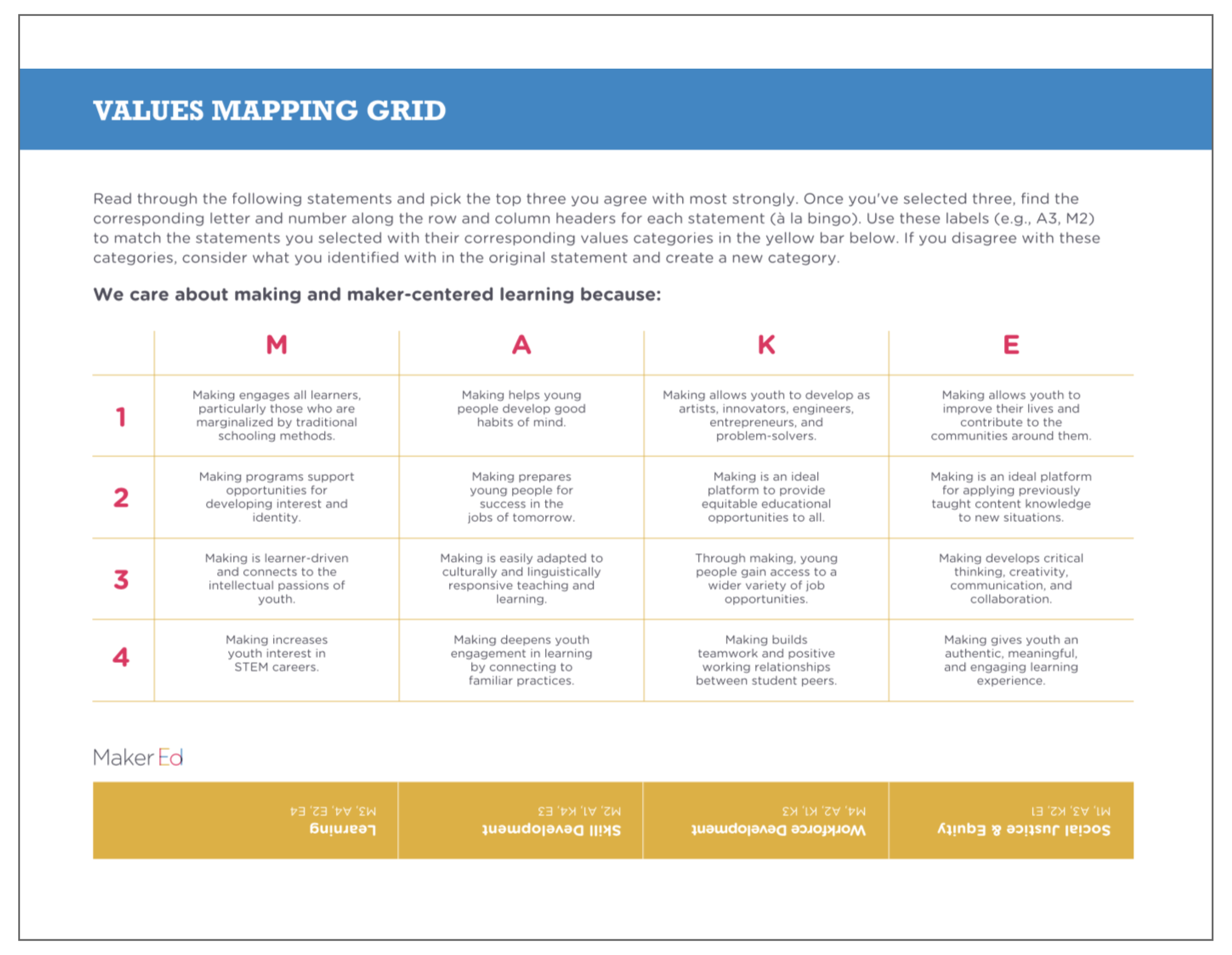
Afterwards, the entire group jumped into a maker-centered activity using low tech cardboard circuit blocks. This activity is emblematic of one of our approaches to curriculum integration, Tinkering to Discover. Participants explored electricity by tinkering with circuit materials, such as lights, buzzers, switches, motors, potentiometers, and batteries. This was an opportunity for all participants to engage in a learner-driven, open-ended, exploratory activity.
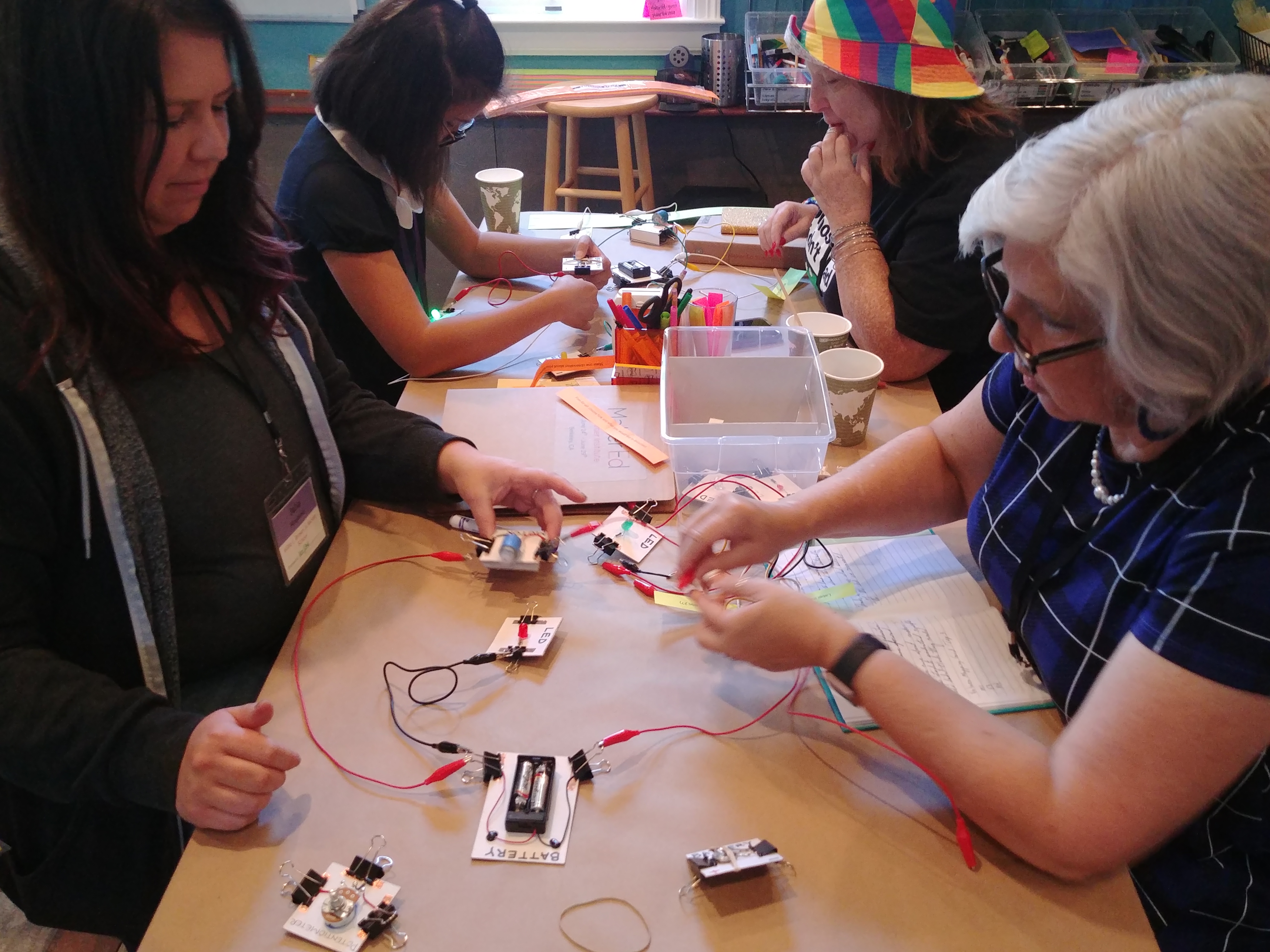
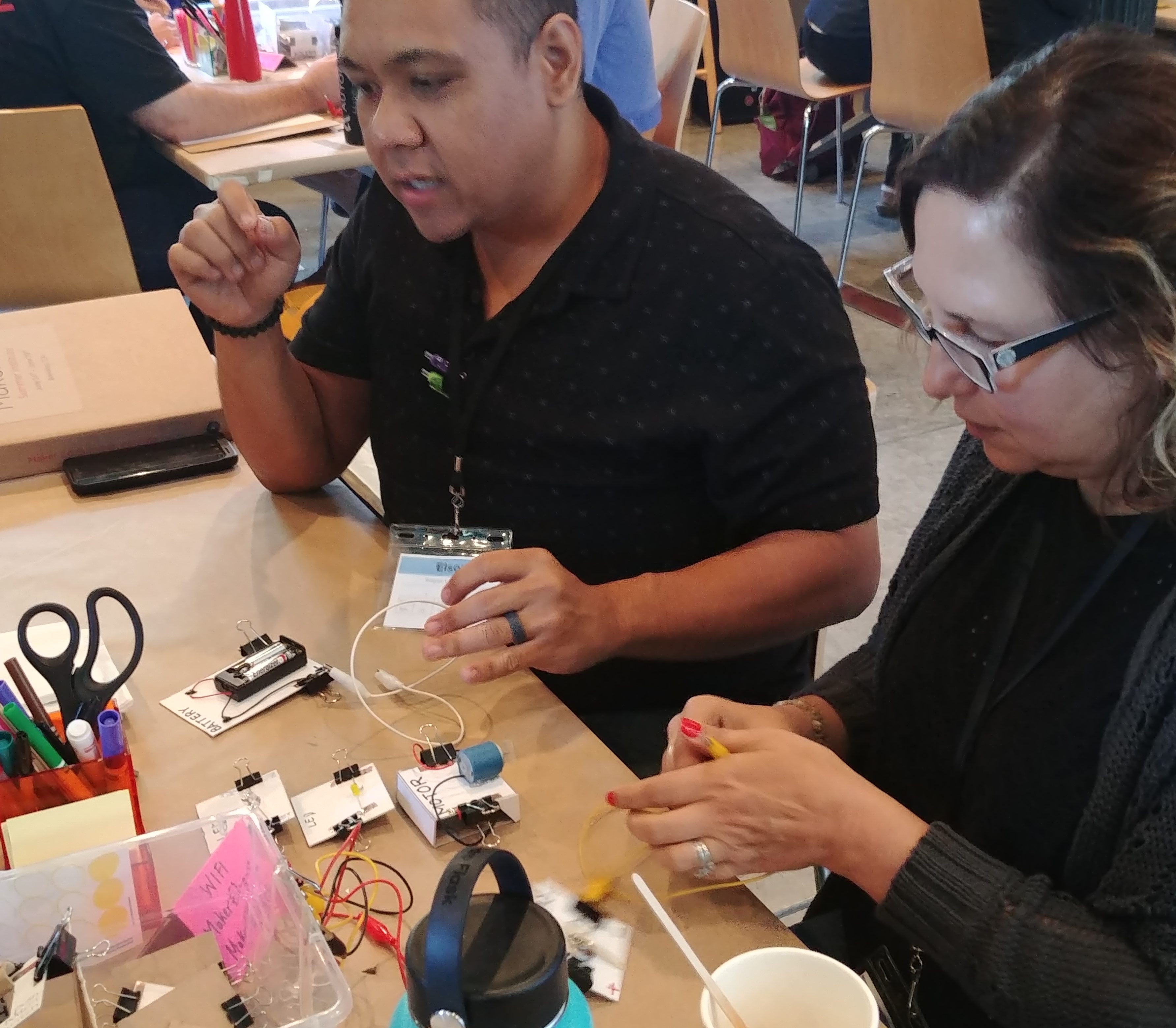
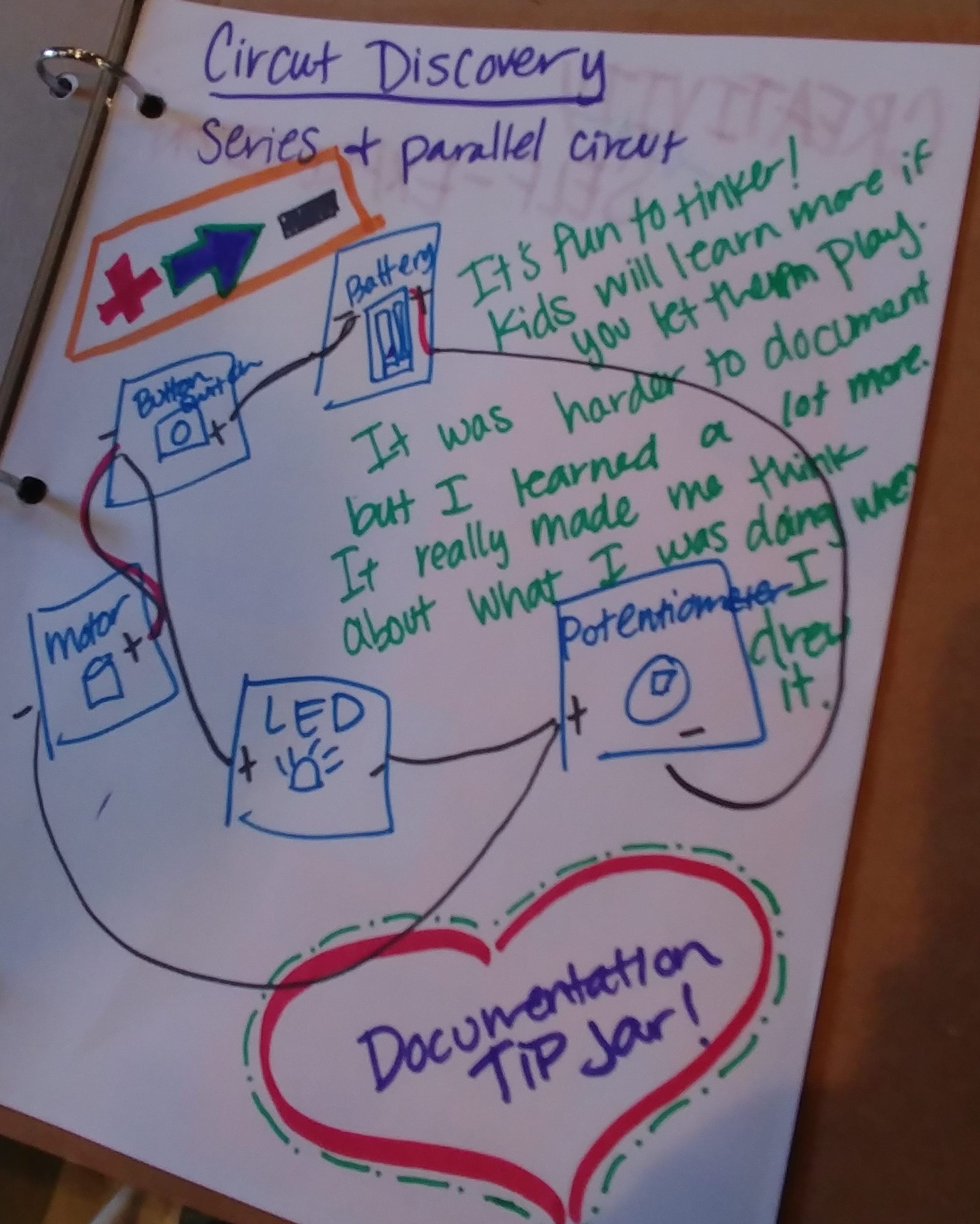
Participants then reflected on their experience first as learners and then as educators using the Learning Dimensions of Making and Tinkering, a tool developed by the Exploratorium’s Tinkering Studio. We discussed the design variables and facilitation moves of a Tinkering to Discover activity. This reflection cycle was repeated after each activity in the curriculum strand.
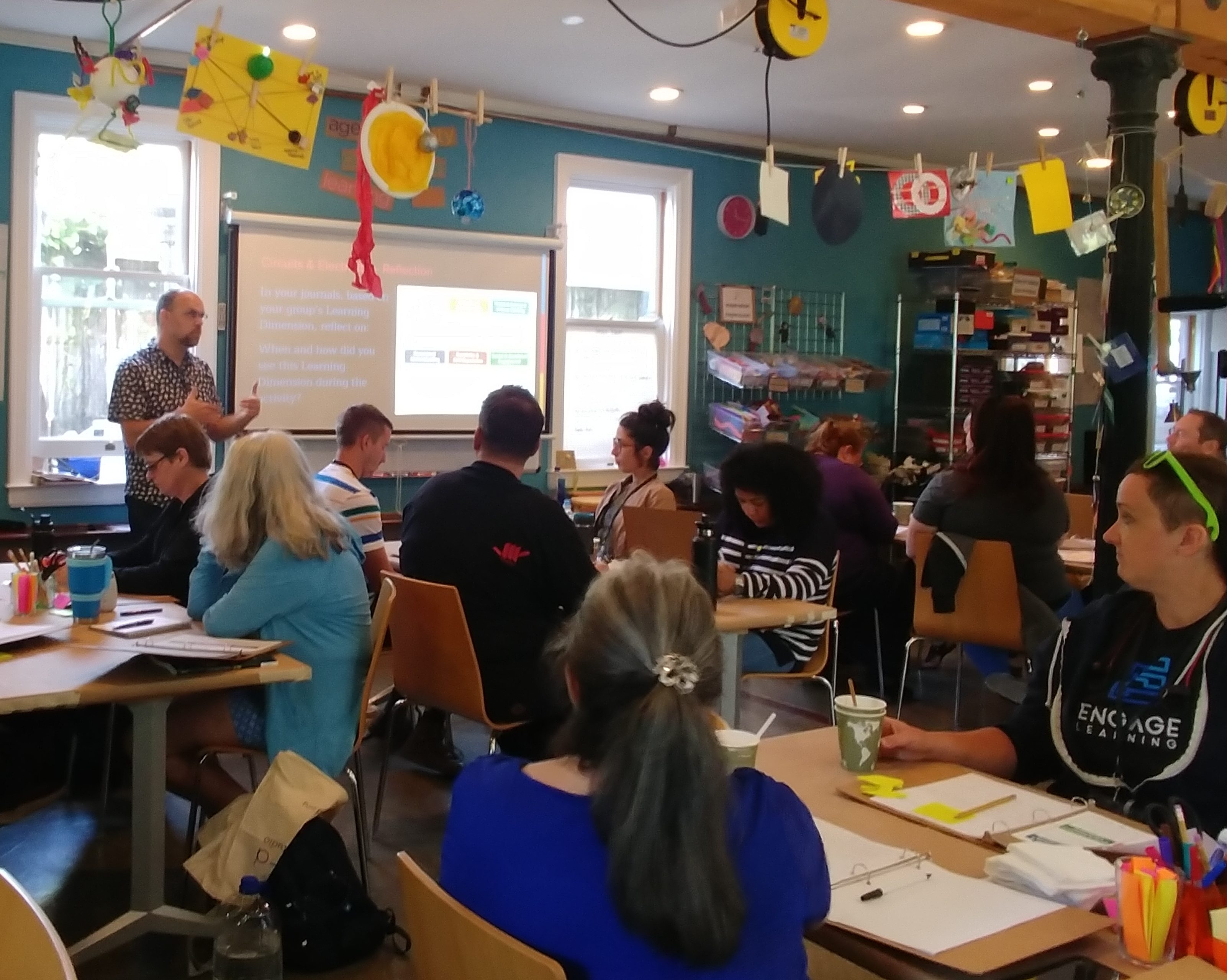
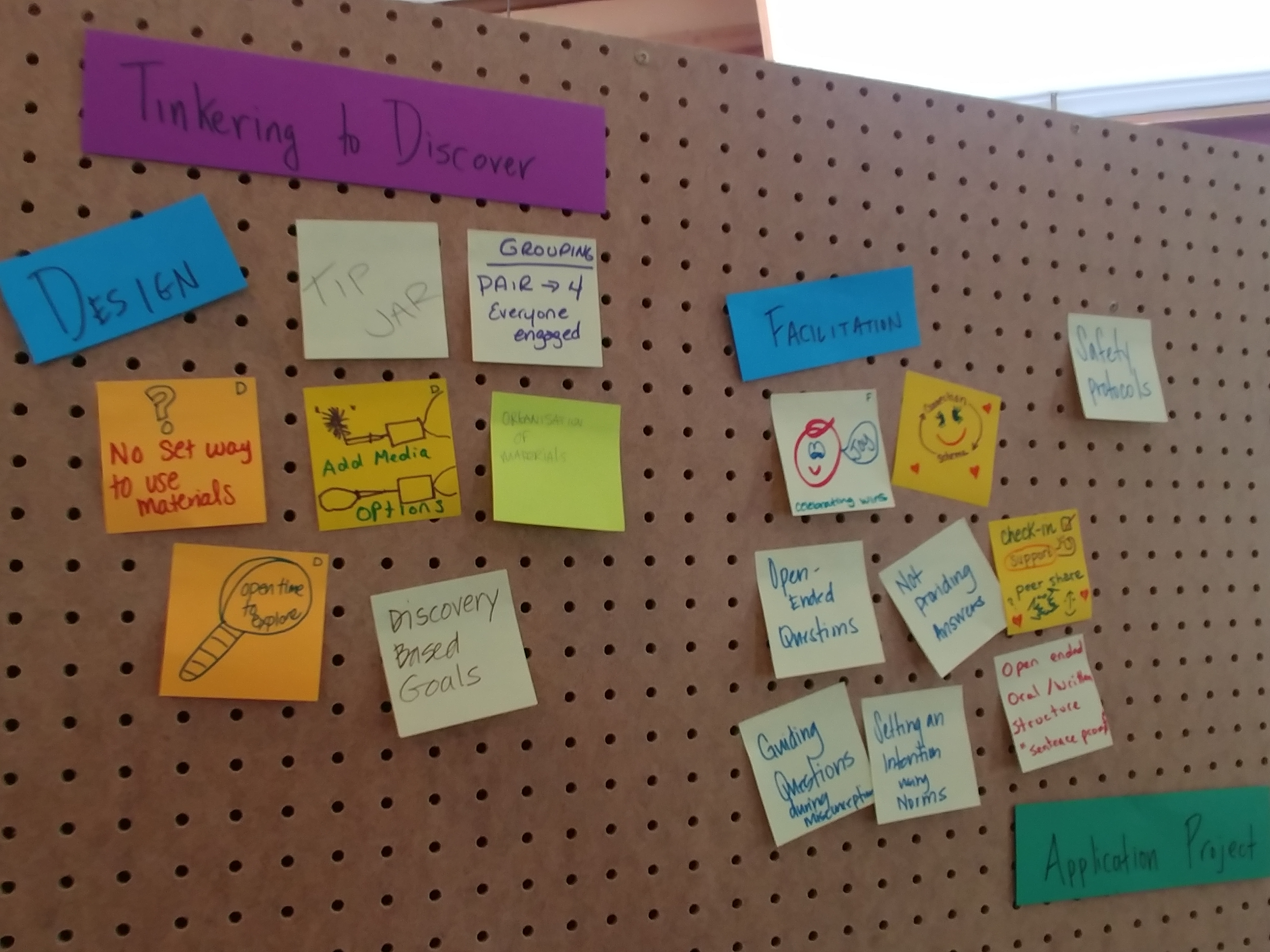
After engaging in this whole group making activity, participants split up into one of their choice-based Learning Strands: Program Development & Planning, Activity/Curriculum Design & Facilitation, or Assessment & Evaluation.
Participants in the Curriculum Strand engaged in a second making activity which explored a combination of history and sewing as an example of the Making to Learn approach to curriculum integration. Participants read and analyzed primary sources related to the Little Rock Nine during the Civil Rights Movement. They created a textile representation of the primary source using different stitching techniques, fabrics, beads, and buttons. We then used these physical representations to create a timeline of the events and discuss the impact they had in relation to desegregation of schools. Participants went through a second cycle of reflection and discussion about their experience, the Learning Dimensions, and the design and facilitation of a Making to Learn activity.
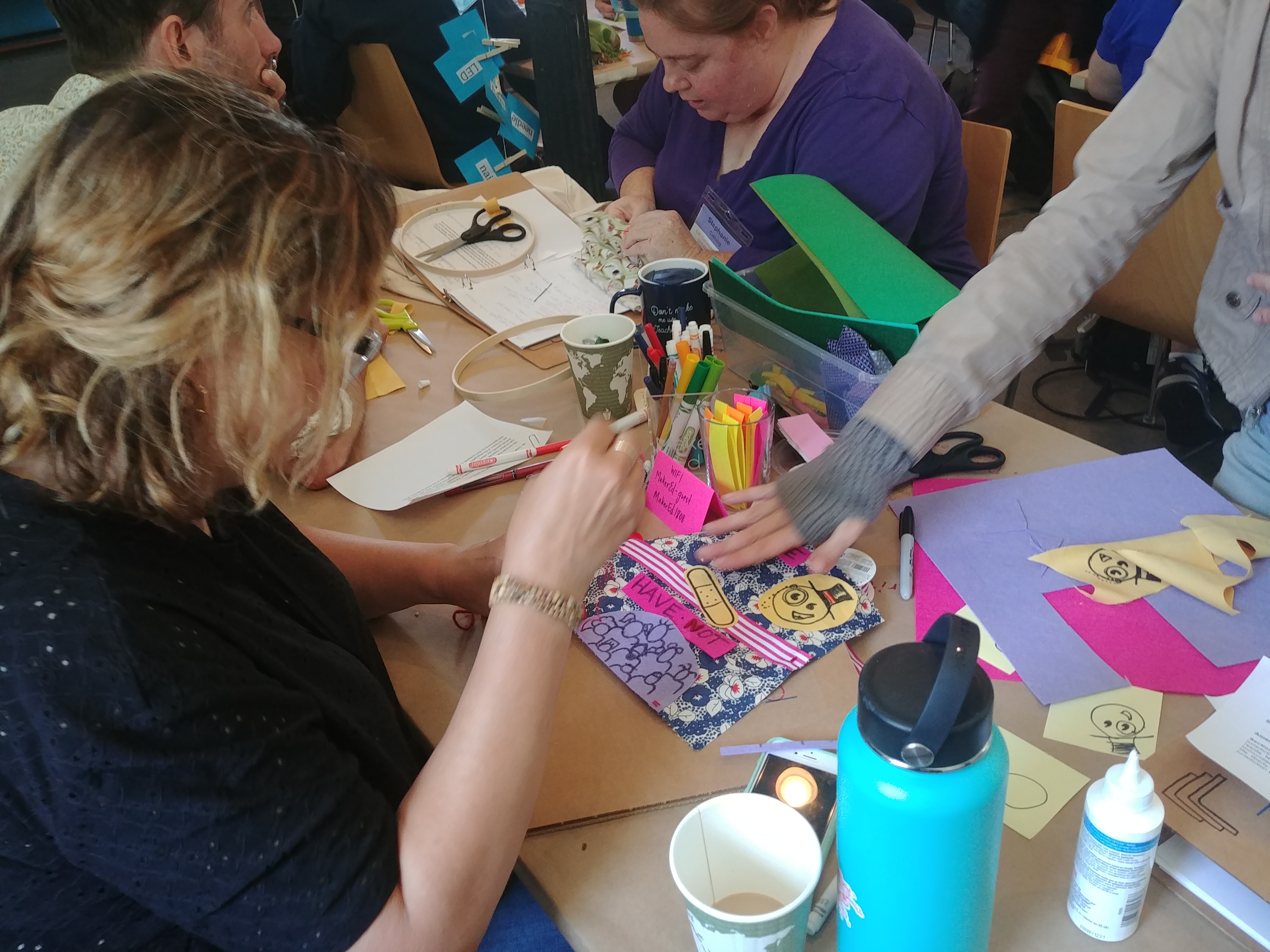
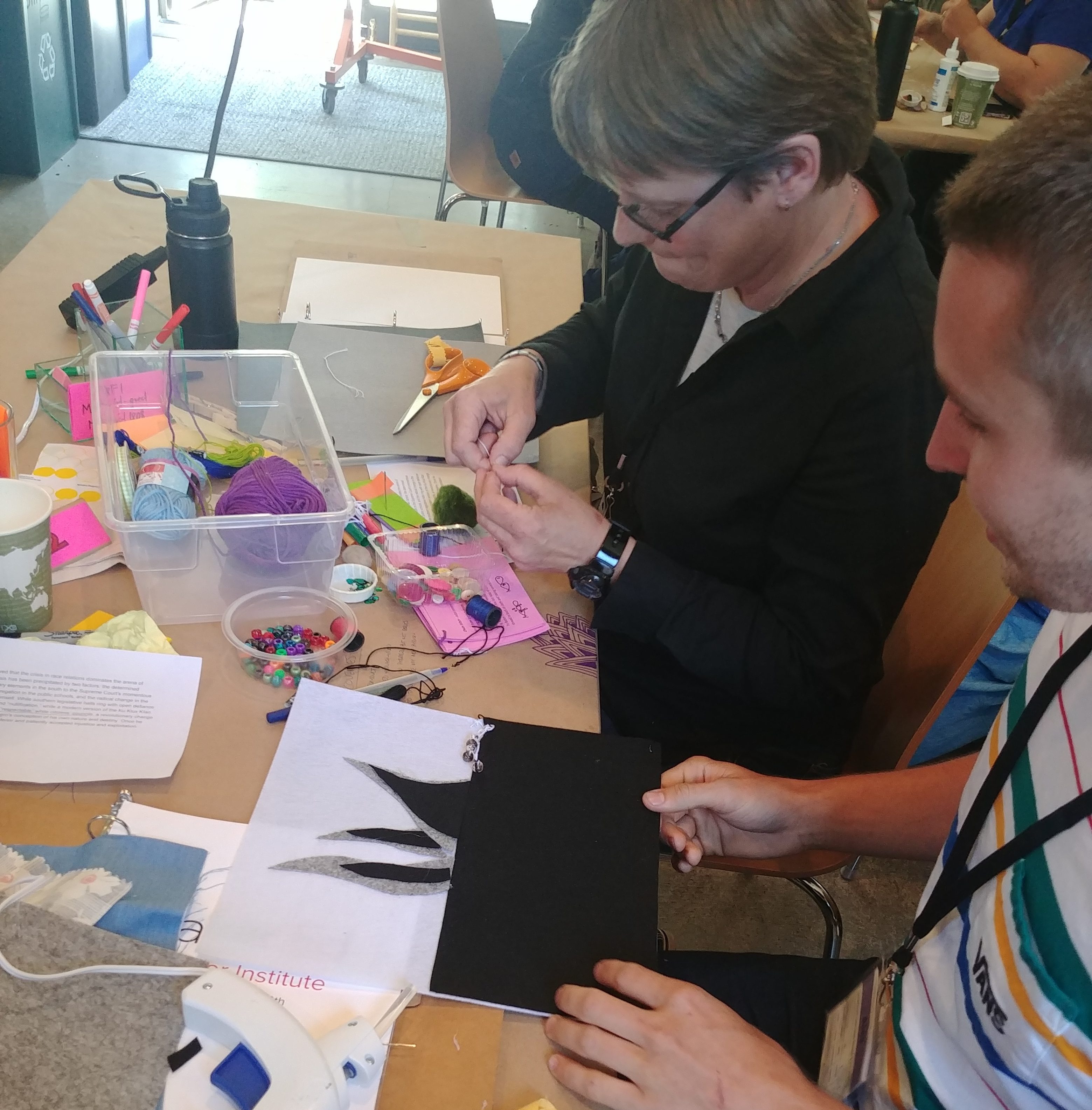
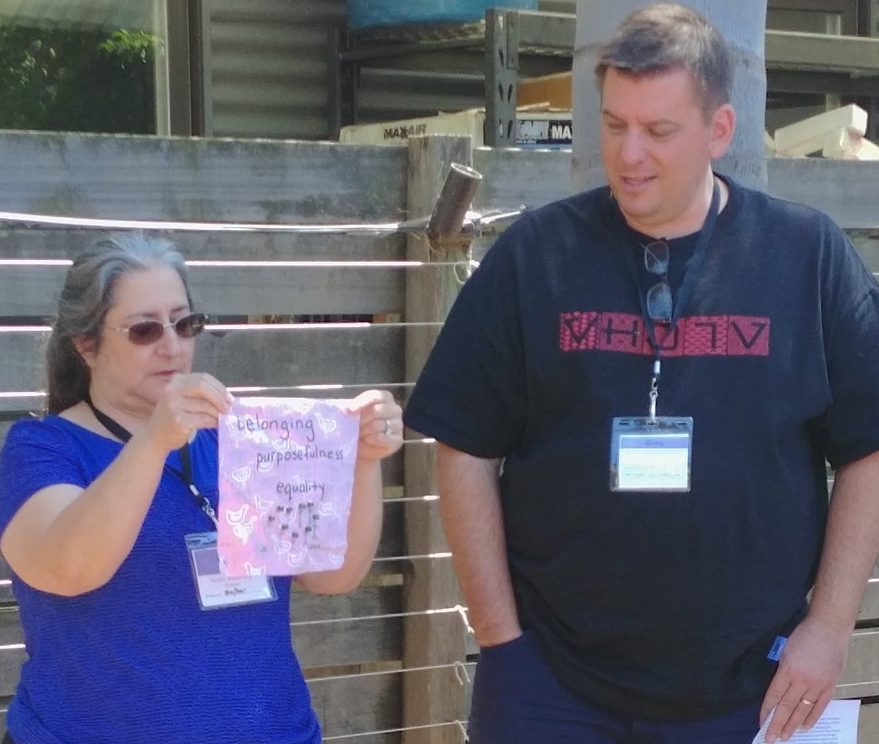
Participants in the Assessment Strand observed the second making activity in order to look for signs of learning based on the Learning Dimensions. They discussed the evidence collected in order to reflect on maker-centered assessments.
 Simultaneously, participants in the Program Development strand worked on building a vision for the goals, impacts, and actions of their program. Since we had a variety of participants from different learning environments, such as K–12 classrooms, museums, community colleges, and more, we used a Parts, Purposes, and Interactions thinking routine from Agency by Design to help participants map the systems of different elements in their respective programs. We also engaged in a stakeholder mapping activity, another tool developed by Maker Ed to help educators reflect on how to establish and deepen relationships with the various stakeholders that impact their work.
Simultaneously, participants in the Program Development strand worked on building a vision for the goals, impacts, and actions of their program. Since we had a variety of participants from different learning environments, such as K–12 classrooms, museums, community colleges, and more, we used a Parts, Purposes, and Interactions thinking routine from Agency by Design to help participants map the systems of different elements in their respective programs. We also engaged in a stakeholder mapping activity, another tool developed by Maker Ed to help educators reflect on how to establish and deepen relationships with the various stakeholders that impact their work.
Throughout the week, we also participated in daily sessions centered on equity and how it plays a role within and throughout our practice as educators. All participants received a copy of Culturally Responsive Teaching and the Brain by Zaretta Hammond. On Day Two, we worked on developing our awareness of lived experiences by reflecting on our different identity markers, such as race/ethnicity, gender, religion, socio-economic status, and sexual orientation. We discussed how our identities and the identities of our students impact our teaching and learning. We used this session to set the groundwork to discuss culturally responsive and equitable teaching practices for the rest of the week.
Finally, we hosted a dinner event for participants that evening. Since we had a large group of participants from all across the country, we enjoyed this opportunity to deepen our connections over a delicious meal.
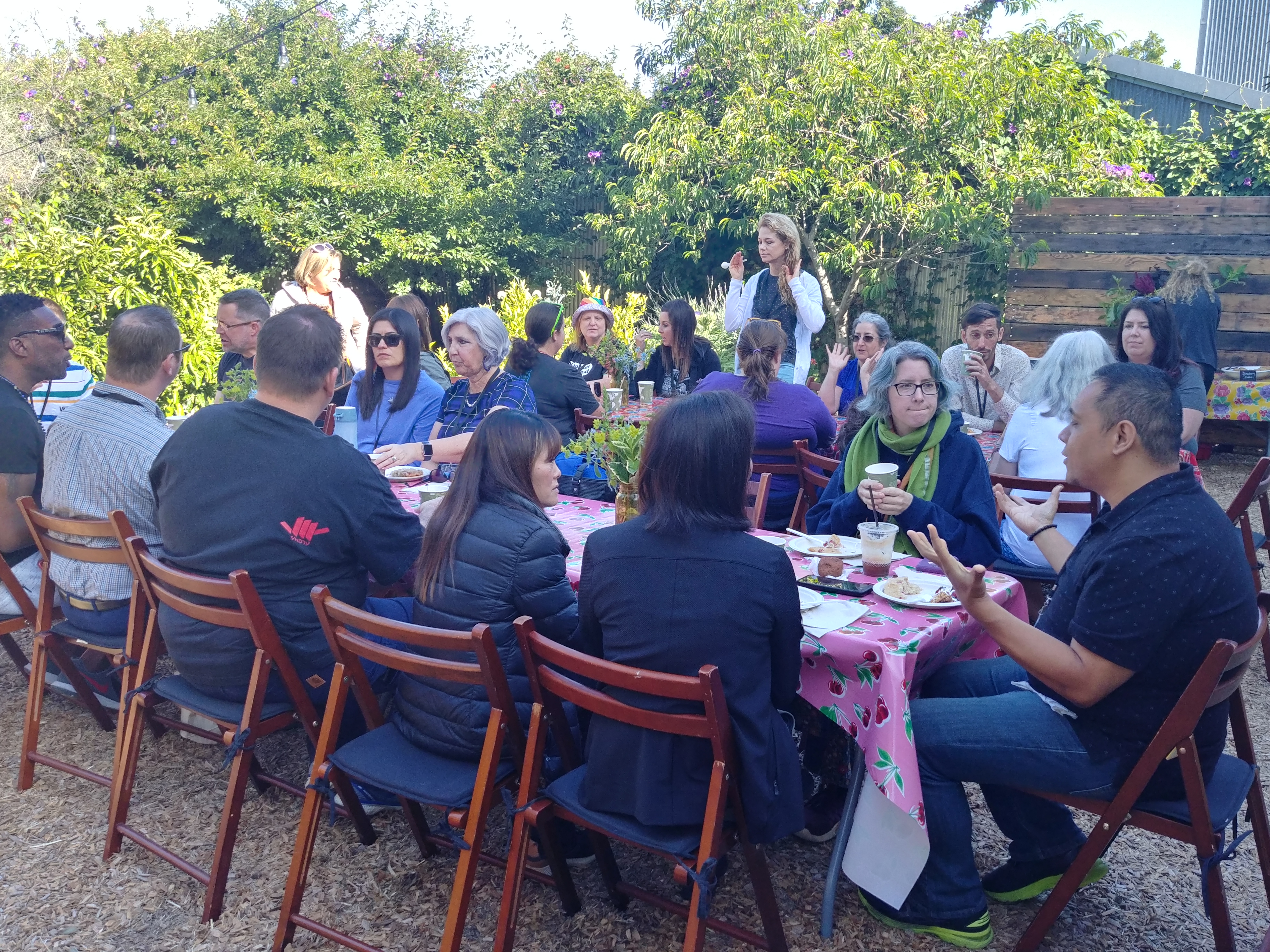
Interested in learning more about what happened at our Summer Institute? Read our recaps from Day 1, Day 3, and Day 4.
